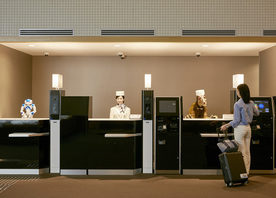Daigoji (醍醐寺) is a massive temple complex that extends over an entire mountain side to the southeast of Kyoto. The temple is a world heritage site and its founding dates back to 1115.
Table of contents:
Introduction to Daigoji temple
There are over 1600 temples in Kyoto, and finding the most worthwhile to visit can be a challenge. While Daigoji is less known than other famous temples in Kyoto, it certainly ranks among the top must visit temples in Kyoto. This is for a number of reasons, for example: the massive temple complex with over 900 years of history to explore, a beautiful landscape garden, a variety of hiking trails, scenic views over Kyoto and the spiritual importance for Japanese Buddhism.
After its founding in the Heian era (794-1185), Daigoji played an important role for Shingon Buddhism. This is a type of mountain asceticism that is still practised around Japan today, with its main centre at Koya-san. The temple was largely forgotten in the 16th century, then Toyotomi Hideyoshi (one of Japans great unifiers) decided to have an epic Sakura party that would be told about in centuries to come. As a result over 700 cherry blossom trees were planted at Daigoji and even today Daigoji is one of the best Sakura viewing spots in Japan.
Exploring the temple grounds

Entrance to the temple grounds is found at the impressive Daigoji Nio-mon Gate, where a footpath takes visitors past the ticket entrance and onto the temple grounds. From there visitors are free to explore the area as they choose. Here are the main points of interest for Daigoji:
Sanboin temple and residence:
This is the former residence of the head priest, the building has an elegant Japanese design. The building dates back to 1115, and was expanded in the 16th century by order of Hideyoshi. This building is a prime example of at the time popular Momoyama architecture.
Sanboin Landscape garden:

Sanboin Garden is one of the absolute highlights of the temple complex and worth visiting on its own. The landscape garden was created with the restoration of Sanboin temple. The garden is over 5,000 sq metres and has a pond at its centre. The best view is from within the temple, from where the pond, a waterfall, an island, multiple stone bridges and around 800 elegantly arranged stones can be viewed.
Shimo Daigo:
Translated as lower Daigo, is the current main structure of Daigoji. Here most of the important buildings can be found, including the main hall, and five-storied pagoda. This area was created in 1598 to make the temple more accessible, as before it was located at Kami Daigo, the higher part of Daigo mountain.
Kondo Hall:
The main golden hall, where visitors come to burn incense and pray. Of special interest are the wall paintings within the hall, they are considered some of the best in Japan.
Five-storied pagoda:

Beside Kondo hall is the five-storied pagoda of Daigoji, which dates back to the original founding of the temple. What’s special about the pagoda is that it survived natural disasters and fires and destroyed parts of the temple complex throughout the centuries. Today the pagoda is the oldest verified structure in Kyoto.
Bentendo Hall:

One of the most iconic structures at Daigoji, Bentendo makes for a fantastic photo opportunity. Especially during the and Autumn leaves period, when the backdrop becomes a tapestry of red and brown colours.
Reihokan Museum:
This treasure house has a rich collection of historic documents, paintings, statues and wall scrolls. The museum also has its own small cherry blossom garden.
Kami Daigo:
Translated as upper Daigo, this is the original place the temple was founded. Different hiking paths wind up from lower Daigo. The route up takes about one hour but those who undertake the journey are rewarded with a panoramic view over Kyoto and Kansai, not to forget a visit to the old Daigo temple structures.
How to access Daigoji temple
The easiest way to access Daigoji is by bus or taxi from Kyoto station. Keihan bus line 301 runs a direct service 1-2 times an hour from Kyoto station (from the backside / Shinkansen side of the station, bus stop H4). The bus takes about 30 minutes, a one way fare is 220 yen, get out at Daigoji bus stop. A taxi takes about 10-15 minutes and will cost an approximate fare of 1.500yen.
Alternatively, take the JR Nara line to Rokujizo station, from there local bus line 22 runs to Daigoji.
Tips for visiting
- As with any popular temple in Japan, the best time to visit is either early or later the in afternoon when crowds are low, and it's easier to enjoy the atmosphere. It will also be a good opportunity to take those iconic photographs.
- Daigoji is a large complex and takes relatively more time to explore than other temples in Kyoto. We suggest taking at least 1 hour to explore lower Daigoji and at least 3 for those hiking up to upper Daigoji.
- For those interested in hiking, branching paths give the option to explore the western mountains of Kyoto further.
- Due to its location, Daigoji is easy to combine with a visit to Fushimi Inari and Uji in the south of Kyoto.

.png)



